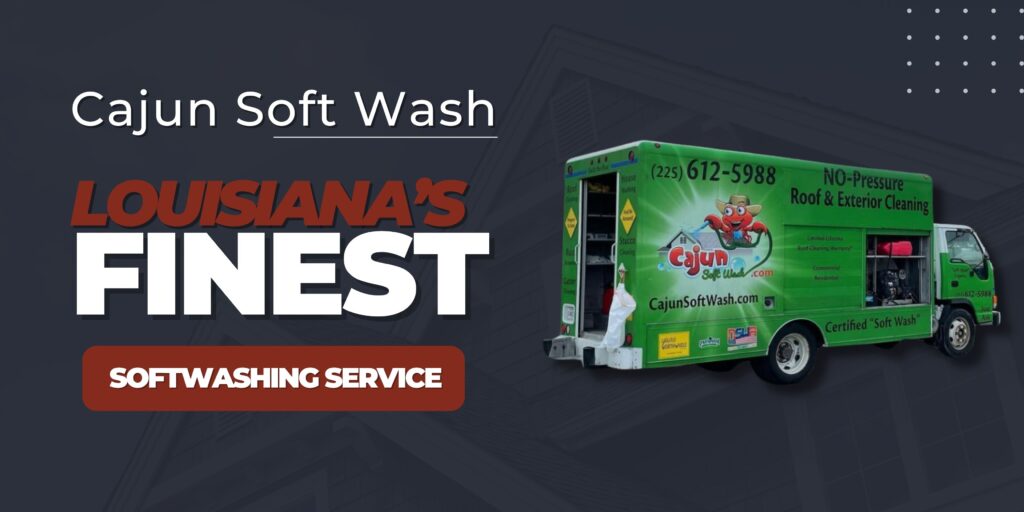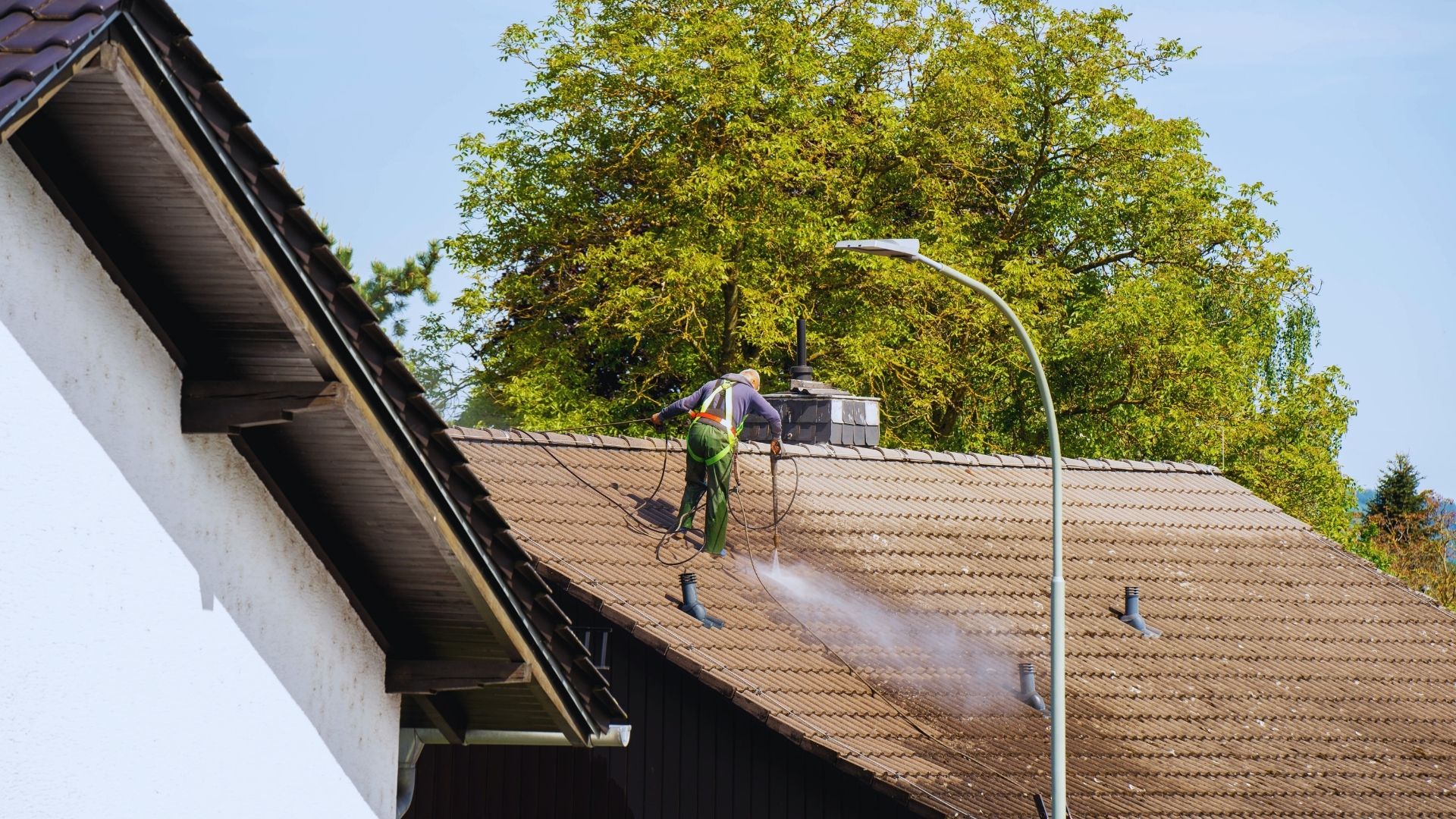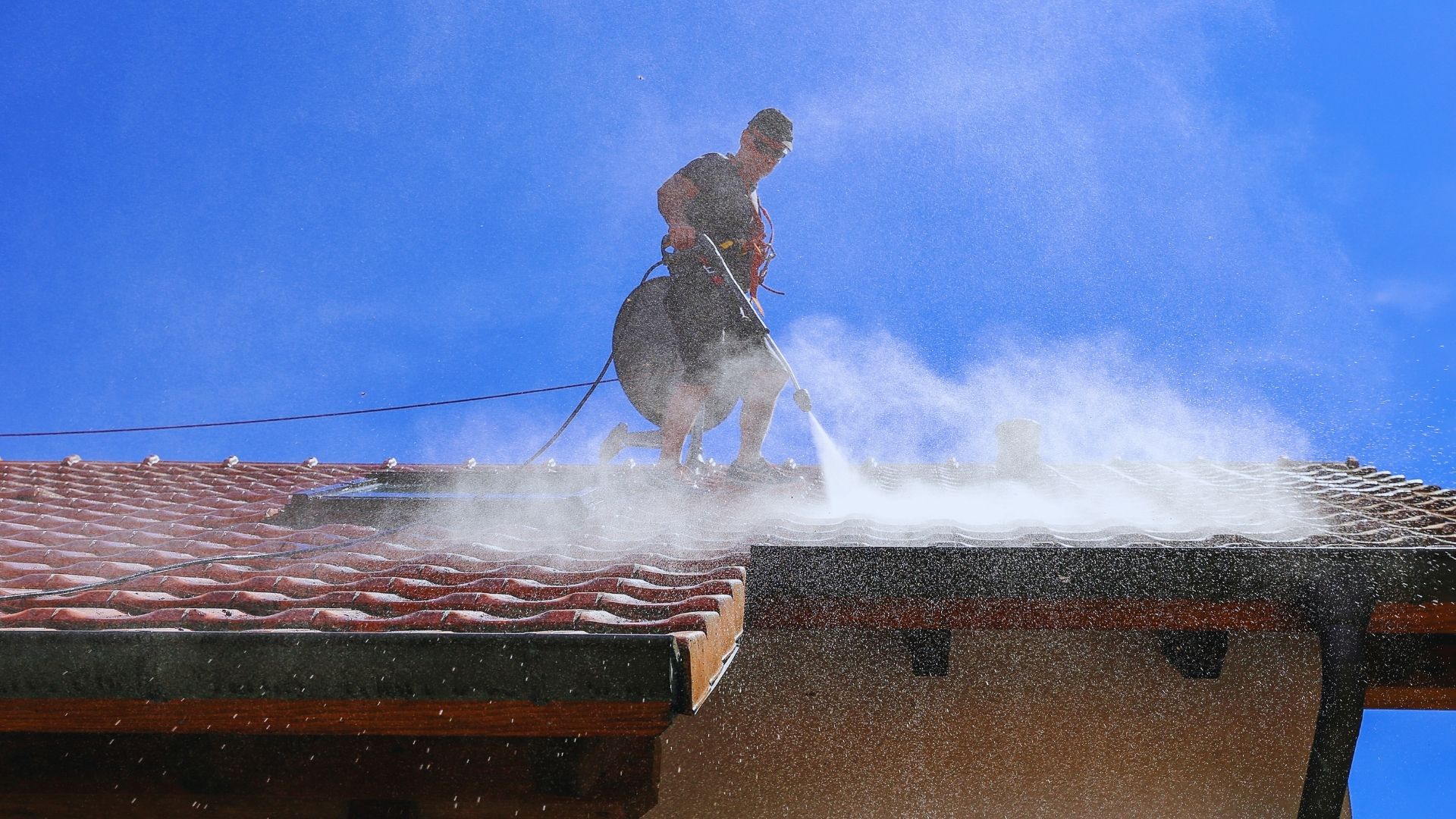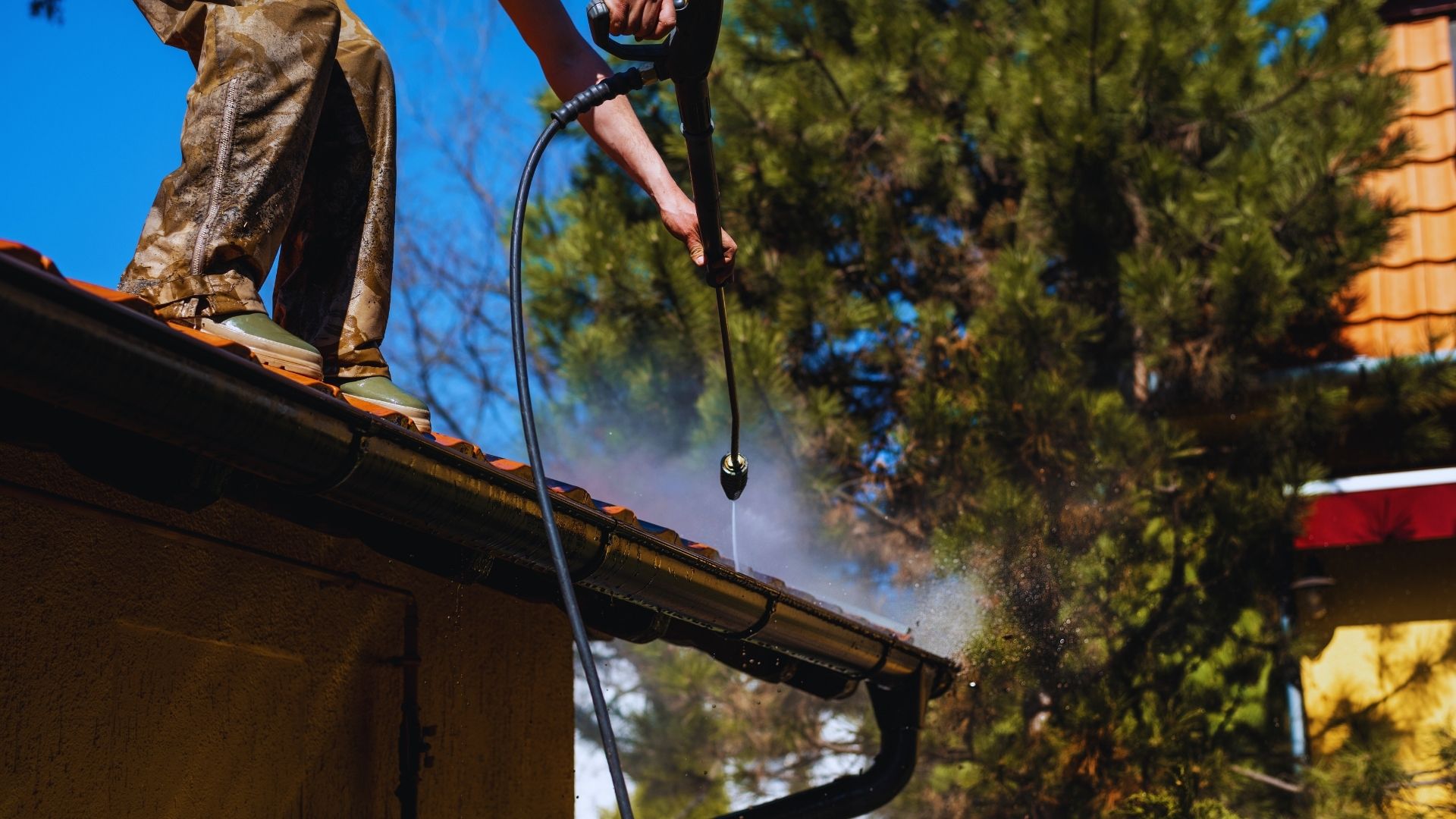Anyone who’s owned an awning in Louisiana knows the struggle. One day it looks great, and seemingly overnight it’s covered in green stuff, dirt streaks, and stains that make the whole house look neglected. If you ignore that buildup long enough and those expensive awning panels start breaking down from the inside out.
Most folks think cleaning an awning is straightforward until they actually try it. Then they realize there’s way more to it than hosing it down with some soap. Different fabrics need different approaches, Louisiana’s climate throws curveballs at every turn, and one wrong move can turn a cleaning project into an expensive replacement job.
Here’s what actually works when learning how to clean an awning, plus the mistakes that cost people hundreds (sometimes thousands) in damage.
Why Louisiana Makes Awning Care Trickier Than Most Places
Living here means dealing with challenges that folks in drier climates never see. The humidity alone creates problems that seem to pop up overnight.
That constant moisture in the air? It’s like a welcome mat for mold and mildew. They’re actually eating the fabric fibers. Let them go long enough and what started as a surface cleaning issue becomes a structural problem.
Then there’s the sun. Sure, it fades colors, but the real damage happens when UV rays break down the fabric weave itself. Combine that with all the organic growth Louisiana humidity encourages, and awnings age fast here.
Don’t even get started on storm season. Between the pollen bombs every spring and whatever debris hurricanes decide to throw around, awnings here collect everything. Tree sap gets baked on by the sun, making it ten times harder to remove later.
A quality awning costs serious money, and proper care can make it last 15-20 years instead of needing replacement in 5-7. That’s thousands of dollars difference.
What Kind of Awning Do You Actually Have?
This matters more than most people realize. Walk into any hardware store asking for “awning cleaner” and they’ll hand you something generic that might work fine – or might damage expensive fabric.
Canvas awnings are classic but finicky. They’re usually natural fibers, which means they’re tough but also porous. That porosity is great for breathability but terrible for mold resistance. These need gentle treatment but thorough cleaning.
Vinyl is the opposite – waterproof and easy to clean, but it can handle stronger solutions. The trick is avoiding anything abrasive that scratches the surface. Once vinyl gets scratched up, it never looks right again.
Acrylic fabric is probably the most forgiving. It’s synthetic, holds up to cleaning well, and doesn’t fade as easily. Still not bulletproof, but it gives homeowners more room for error.
Mesh awnings are interesting because dirt doesn’t just sit on top – it works its way into the weave. Surface cleaning won’t cut it. These need thorough soaking and rinsing to get embedded particles out.
Then there are the mixed-material awnings with aluminum frames and fabric panels. Each part needs different care, which complicates the whole process.
Getting Ready for the Cleaning
Forget the fancy equipment lists. Here’s what actually makes a difference:
A garden hose with a decent spray nozzle is essential. Those cheap plastic nozzles break when doing real work. Get something metal that can switch between gentle spray and stronger stream without breaking.
Soft brushes are non-negotiable. Auto parts stores sell great car wash brushes that work perfectly for awnings. Never use anything with wire bristles – that’s a fast way to shred fabric.
For cleaning solutions, start simple. Regular dish soap (the kind that cuts grease) works for most routine cleaning. For tougher jobs, specialty awning cleaners from marine supply stores are usually better than hardware store versions.
White vinegar handles mold and mildew naturally without harsh chemicals. Baking soda tackles set-in stains. Commercial mold removers work but read labels carefully – some are too strong for certain fabrics.
Two big buckets make the job easier – one for solution, one for rinse water. Drop cloths protect plants, but old sheets work just as well as expensive tarps.
Safety gear isn’t optional when working with ladders and cleaning chemicals. Good gloves, safety glasses, and stable ladder setup prevent both chemical burns and emergency room visits.
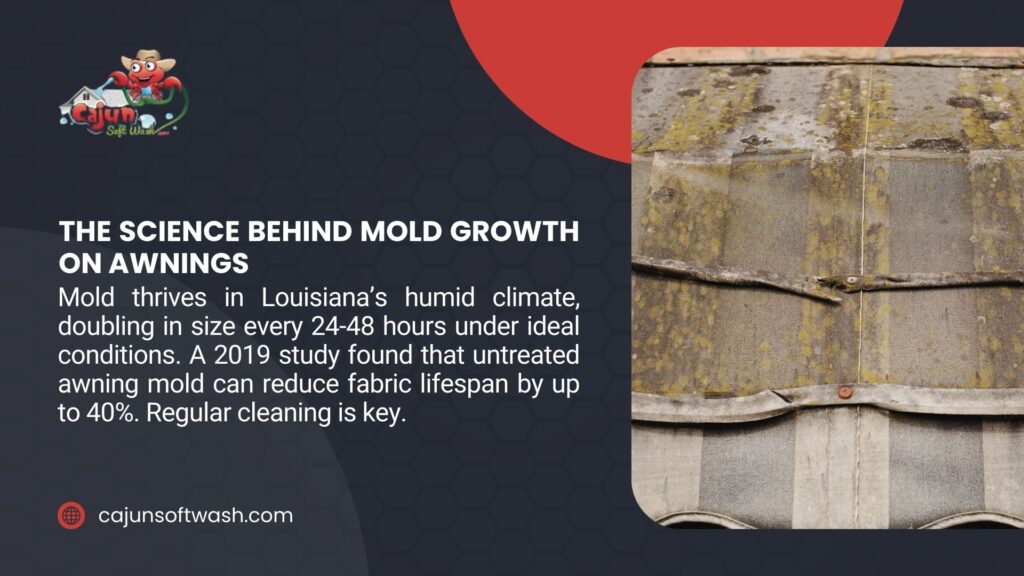
How to Clean an Awning: The Process That Actually Works
Start With Protection
Cover everything underneath before starting. Cleaning solutions kill plants faster than most people expect, and trying to rinse off soap residue from delicate landscaping while standing on a ladder isn’t fun.
Check the awning condition first. Loose seams or small tears will become big tears once water and cleaning pressure hit them. Fix structural issues before cleaning, not after.
Weather timing matters more than most realize. Hot, sunny days cause cleaning solutions to dry before they can work, leaving streaks and residue. Overcast days work better, but avoid windy conditions that blow chemicals around.
The Actual Cleaning
Rinse everything first with plain water. This seems obvious but many people skip it, then wonder why their cleaning solution isn’t working. All that loose dirt and debris needs to go before chemical cleaning starts.
Mix cleaning solutions according to directions, but start weak and go stronger if needed. It’s easier to apply a second round of mild cleaner than to repair damage from something too harsh.
Work in sections small enough to clean and rinse before the solution dries. This usually means 3-4 foot squares, depending on how fast someone works. Rushing leads to streaks and uneven cleaning.
Apply solution with the brush using circular motions, but let chemistry do most of the work. Aggressive scrubbing damages fabric faster than it removes stains.
For stubborn stains, let the solution sit for 5-10 minutes before scrubbing. This dwell time breaks down organic growth and loosens embedded dirt. Don’t let it dry completely though. Rinse thoroughly after each section. Soap residue left behind attracts dirt like a magnet, making awnings look worse faster.
The Expensive Mistakes People Make
Pressure Washing
This is the big one. Seems logical – blast away the dirt with high pressure and get instant results. Reality check: pressure washing destroys awning fabric. The force tears fibers, forces water into seams where it shouldn’t go, and strips protective coatings.
Even “low pressure” settings on most consumer pressure washers deliver more force than awning fabric can handle safely.
Wrong Chemicals
Bleach seems like the obvious choice for mold and staining, but it breaks down fabric fibers and removes waterproof treatments. Same with harsh acids or petroleum-based cleaners.
Pool chemicals are another common mistake. Yes, they kill algae, but they’re designed for hard surfaces, not fabric.
Ignoring the Frame
Everyone focuses on the fabric and forgets about the metal framework. Corrosion starts small but spreads fast, especially with Louisiana’s humidity. Clean aluminum frames with appropriate metal cleaners to prevent problems.
Storage While Wet
This might be the most expensive mistake of all. Storing or retracting wet awnings creates perfect conditions for mold growth that can permanently damage fabric. Always let everything dry completely first, even if it means leaving the awning extended longer than planned.
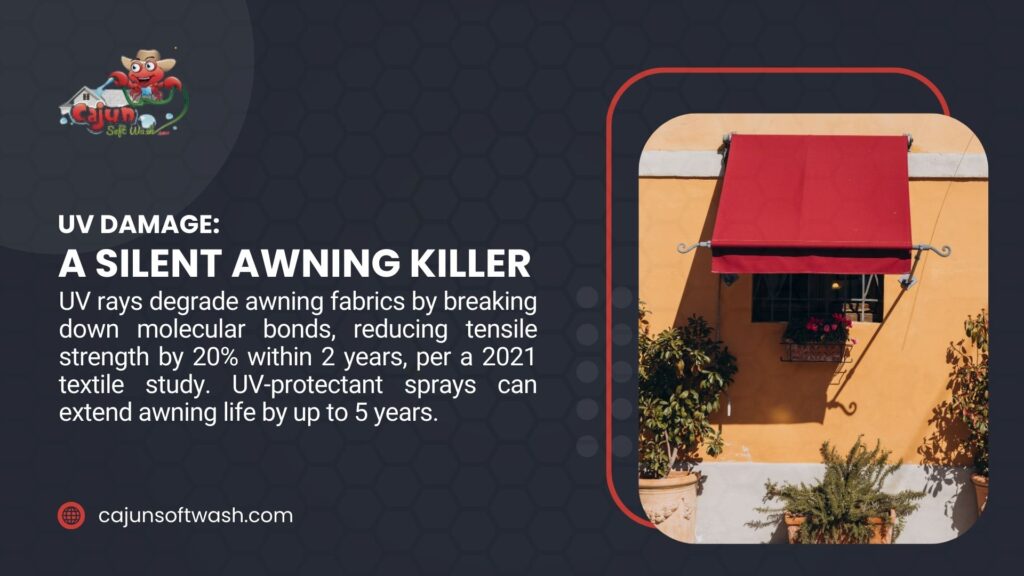
When Professional Help Makes Sense
Some awning cleaning jobs are beyond reasonable DIY scope. Large awnings, especially second-story installations, present safety challenges that aren’t worth the risk. Professional equipment reaches areas safely that would require dangerous ladder work for homeowners.
Expensive specialty fabrics sometimes need specific care that generic cleaning products can’t provide. Marine-grade fabrics, custom weaves, or awnings with special treatments benefit from professional expertise.
Severe mold, mildew, or staining that doesn’t respond to gentle cleaning might need stronger solutions that require professional application. Trying to go stronger with DIY methods often causes more damage than it fixes.
Time constraints matter too. Professional crews can clean large awnings in hours instead of the full weekend; it might take homeowners working carefully.
For homeowners dealing with other exterior cleaning challenges, similar gentle approaches work for how to clean stucco without pressure washer and cleaning stucco with vinegar.
Keeping Awnings Clean Longer
Regular maintenance prevents major cleaning projects. Monthly inspections catch problems while they’re still easy to handle. Look for early mold growth, staining, or fabric damage that’s easier to address immediately.
Seasonal deep cleaning works better than waiting until awnings look terrible. Spring cleaning removes winter accumulation, fall cleaning prepares for dormant season.
Address spills and stains immediately. Bird droppings, tree sap, and food spills become much harder to remove once they set. Quick attention with mild soap and water handles most fresh stains easily.
Retract awnings during severe weather. Louisiana storms can deposit debris that creates permanent stains or damage fabric beyond repair.
Why Soft Washing Works Better
Professional soft washing uses low pressure water delivery with specialized cleaning solutions designed for specific materials. This approach cleans more thoroughly while eliminating the fabric damage risks that come with pressure washing.
The cleaning solutions are custom-mixed for each job based on fabric type, stain severity, and environmental conditions. This targeted approach gets better results than generic cleaners while protecting expensive materials.
Professional equipment reaches areas that are difficult or dangerous for homeowner cleaning. It also allows for complete coverage without the section-by-section approach that sometimes leaves visible lines between cleaned areas.
The results last longer because soft washing kills mold and mildew at the root level rather than just cleaning surface stains. This prevents rapid re-growth that makes awnings look dirty again within weeks.
Similar gentle principles apply to other exterior cleaning challenges, like cleaning white stucco and removing black mold from stucco.
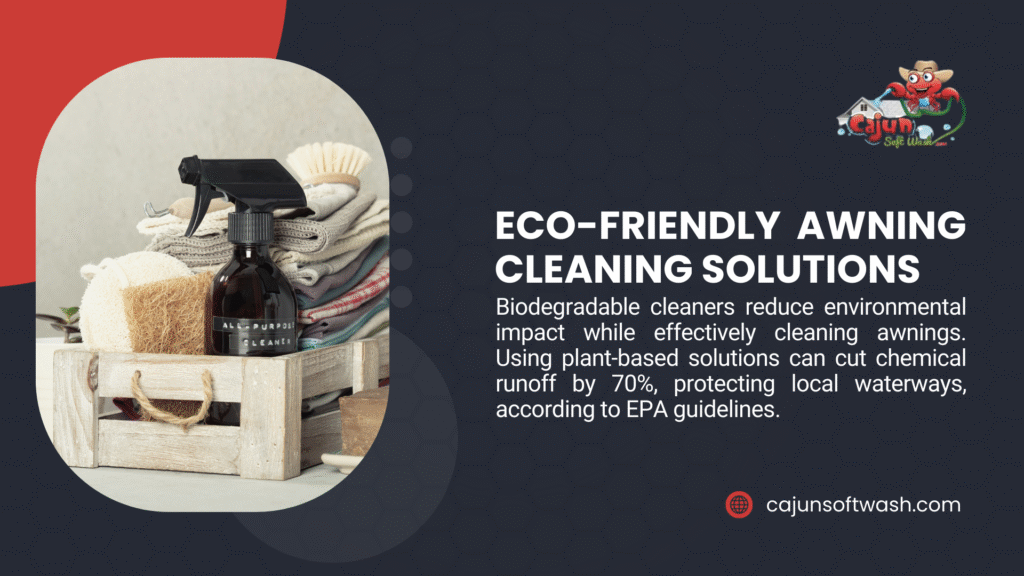
Professional Awning Care That Actually Works
Learning how to clean an awning properly helps maintain home appearance and protects the investment, but when guaranteed results matter without damage risk, professional cleaning makes more sense.
Cajun Soft Wash specializes in Louisiana’s unique cleaning challenges. The team understands what works in high humidity, how to handle storm damage, and which solutions work best for different awning materials.
After serving the Baton Rouge area since 2013, we’ve seen every type of awning problem and developed proven solutions. Don’t risk expensive awning damage with trial-and-error cleaning methods. Contact us for professional awning cleaning that actually works.


